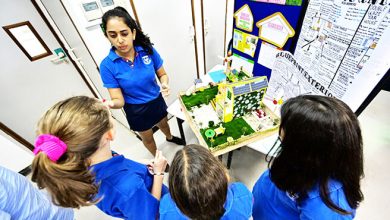Strategies for Incorporating STEAM Education in the Classroom

Science, Technology, Engineering, Arts, and Mathematics (STEAM) is a powerful approach to learning that integrates various subjects to create a comprehensive educational experience. It encourages students to explore, experiment, and engage in hands-on activities that promote critical thinking, problem-solving, and creativity. Incorporating STEAM education in the classroom can be challenging, but with the right strategies, it can be a rewarding and enjoyable experience for both teachers and students.
1. Start with a STEAM Curriculum
The first step to incorporating STEAM education in the classroom is to design a curriculum that integrates all the five subjects. This curriculum should be aligned with the standards of each subject and should be tailored to meet the needs of the students. It should also be flexible enough to allow for modifications and adjustments based on the students’ learning preferences and needs.
2. Create a Maker Space
A maker space is a designated area in the classroom where students can engage in hands-on activities and experiments. This space should be equipped with various materials and tools that support STEAM education, such as 3D printers, robotics kits, art supplies, and science equipment. It should also be designed to encourage collaboration and creativity, with comfortable seating and ample space for group projects.
3. Use STEAM-Based Learning Activities
STEAM-based learning activities are an excellent way to engage students in the classroom. These activities can range from simple experiments to complex projects that integrate all five subjects. They should be designed to promote critical thinking, problem-solving, and creativity. Some examples of STEAM-based learning activities include building a bridge using only straws and tape, designing and building a solar-powered car, or creating a stop-motion animation using art and technology.
4. Integrate Technology
Technology is a critical component of STEAM education, and integrating it into the classroom can enhance the learning experience. Teachers can use various tools such as interactive whiteboards, tablets, and educational apps to create a more immersive and engaging learning experience. They can also use online resources such as virtual field trips, simulations, and games to supplement classroom learning.
5. Foster Collaboration
Collaboration is a fundamental aspect of STEAM education. Teachers should create opportunities for students to work together on projects and activities, encouraging them to share their ideas and perspectives. This collaboration fosters teamwork, communication, and problem-solving skills, which are essential for success in the 21st century workplace.
Incorporating STEAM education in the classroom requires a deliberate effort to integrate various subjects and create an immersive and engaging learning experience. By designing a STEAM curriculum, creating a maker space, using STEAM-based learning activities, integrating technology, and fostering collaboration, teachers can create a classroom environment that promotes critical thinking, problem-solving, and creativity, preparing students for success in the 21st century.



